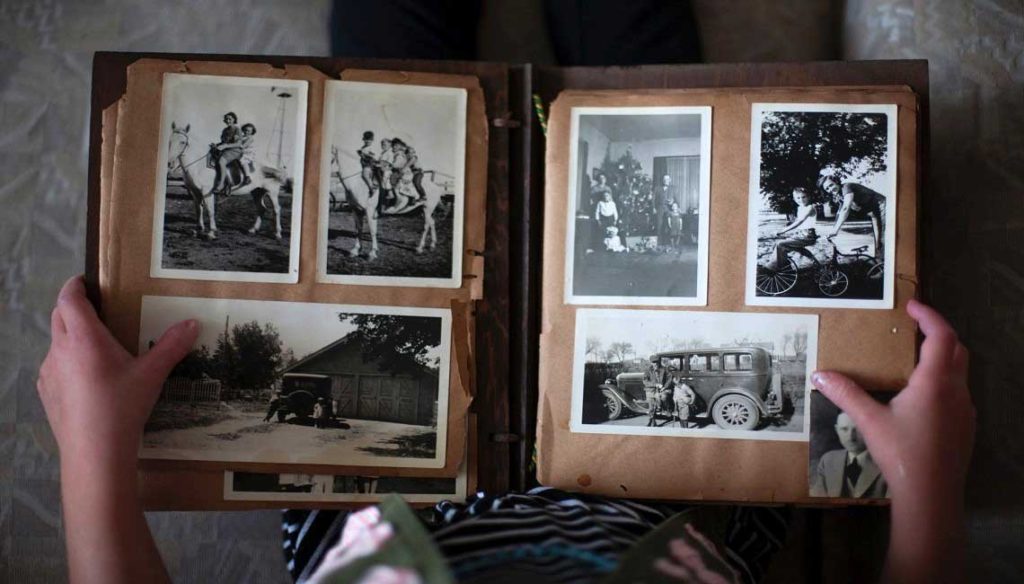
Through the photographs, each family constitutes a chronicle-portrait of itself,
Susan Sontag*
a case of portable images that testifies to the firmness of their ties.
The story goes that the Frenchman Louis Daguerre perfected the invention of his compatriot Joseph Nicéphore Niépce and added his own technique to create the daguerreotype that is the antecedent of current photography. That method was based on getting an image fixed on a copper plate captured through a dark camera. The results obtained were surprising, sometimes drawing was used to define the figures and the quality was permanent, as explained in this video https://youtu.be/pnB8RicARlo
In his device, Daguerre recorded the desired image through chemical procedures that made it photosensitive, so that it caught the light and revealed a person or an object. The invention of the French quickly evolved and became photography, a word that comes from the Greek phot which means light and from graf or to write, together it means “to write with light”.
This invention was framed by the artistic environment of the 19th century and photographers, also apprentices of composition and perspective, added these elements to the images to give them aesthetics. In addition, it was said that it captured reality, which fascinated scientists, thus it became an instrument for recording events and for portraying people.
This modern technique was unveiled at the French Academy of Science on August 19, 1839. The Gallic state bought the invention in order to industrialize it, make it accessible for public sale, and it took a little over a century for the large black boxes to de Daguerre to evolve into portable cameras and in the present century to digital photography. It went from being an instrument of scientists to becoming an indispensable element for all people.
Various contributions to the technique occurred until instant photography was achieved at the end of the 19th century. In 1888 George Eastman launched the Kodak camera which introduced the reel of photographic film and eliminated the substitution of copper or glass plates. In 1907 the Lumière factory commercialized colour photography called the autochrome plate. In 1931 the electronic flash used when the light was insufficient was invented and the invention of the Polaroid camera arose with its development in 60 seconds. In the 1940s, portable-sized cameras appeared and lenses evolved from simple to very sophisticated. Focus techniques, use of the diaphragm and speed are disseminated to obtain the best shots. This activity has become professional and since then great photographers around the world have provided unforgettable images.
It is said that families are the main consumers of cameras, due to the importance of documenting events such as portraits throughout life, trips, birthdays, weddings, celebrations and even funerals. Today, full access to capture memories in images is possible thanks to devices in digital cameras and capture everything at the specific moment.
Based on this story, the Australian Korske Ara took the initiative to increase the dissemination of registration photography of issues of global interest such as environmental problems or causes of social activism and has promoted the World Photography Day #WorldPhotoDay to commemorate the date on which the first photographic invention was presented in August 1839 and since 2007 this unofficial celebration has lasted, but it is a great inspiration to leave a testimony of our passage through this world.
Photography has been transformed over time, but its purpose of being able to tell stories remains. Some specialists in grief management have suggested that, during this process, it is recommended to reconstruct the story of that deceased loved one through photographs in which they appear and those images that their eyes wanted to capture. It is very comforting to browse the family archives and find the images of your best moments, those where you enjoyed life, your important events, your diverse experiences and meet with friends or family to remember you like this, in fullness and happiness.
In these days of persistent confinement, learning something new like photography, with the ease of online courses, to achieve good technique and resort to a portable camera or the resources offered by the mobile device, would add to preserving the memory of the moments lived in the company of loved ones to always remember or leave as a beautiful legacy to descendants.
At Del Pueblo Funeral Home, we always want to contribute to increasing well-being in all events of our lives, that’s why we remind you that we are making the most difficult moments easy.
* Susan Sontag (1973) On photography, Alfaguara, p.23
